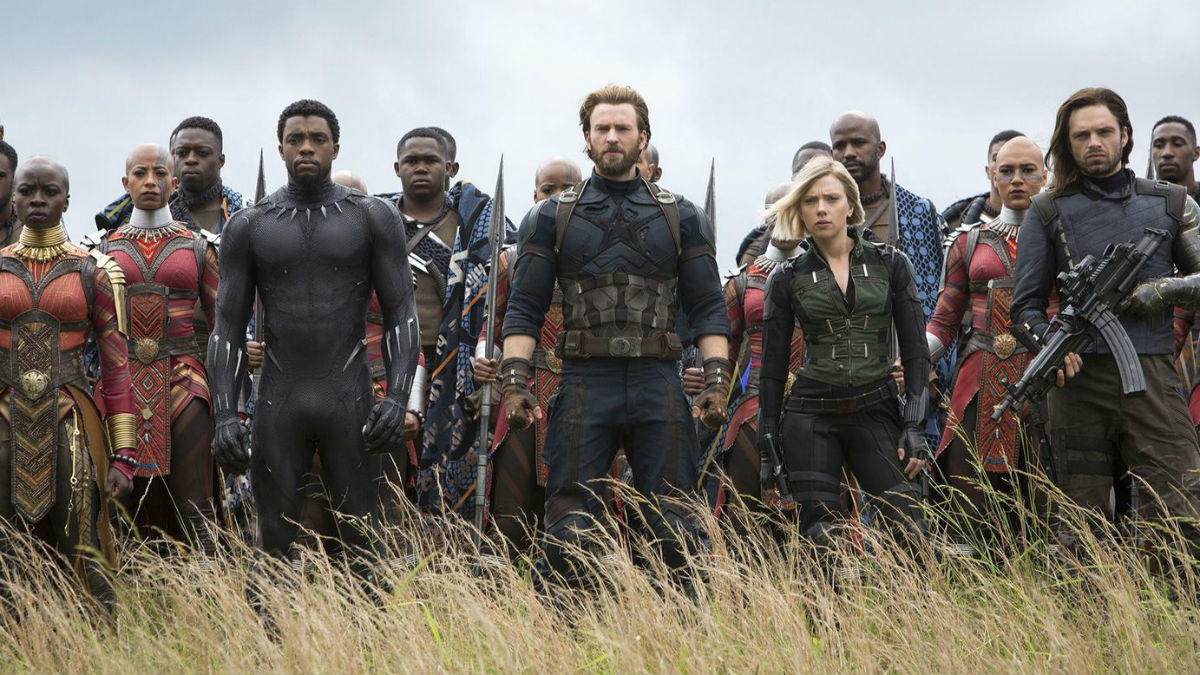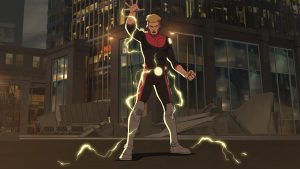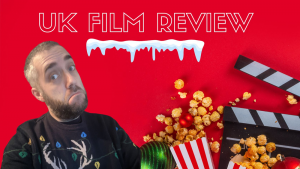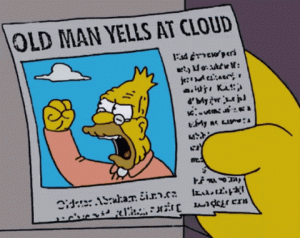
“You break the rules and become a hero,” Wanda Maximoff tells Stephen Strange at the start of Doctor Strange in the Multiverse of Madness. “I do it and I become the enemy… doesn’t seem fair.”
That line from should confuse some viewers. After all, such rule breaking didn’t occur in 2016’s Doctor Strange, to which Multiverse of Madness is a sequel. It happened in Avengers: Infinity War. And Wanda’s rule-breaking happened in WandaVision. During the drive to Avengers: Endgame, this type of comprehensive world-building was a feature and not a bug of the Marvel Cinematic Universe. But it’s become a distraction for some fans, which is why Marvel has rebranded its divisions, into Marvel Film, Marvel Television, and Marvel Animation.
According to Marvel streaming head Brad Winderbaum (via Variety), the rebrand addresses a problem among fans. “There was a lot of pressure post-Avengers: Endgame on the public to feel obligated to watch absolutely everything in order to watch anything,” he said. “Part of the rebranding was a signal to the general audience that we’re creating a lot of options, and you can follow your tastes within this brand.”
The rebrand makes clear what every comic fan has known for a long time: you don’t have to read it all to enjoy it all.
Hunting for the Whole Story
Earlier this month, Marvel Comics launched its latest company-wide crossover event, Blood Hunt. Spearheaded by Jed MacKay, Blood Hunt involves a vampire attack across the globe, which sees some heroes turning to the dark side.
In addition to the five main Blood Hunt issues written by MacKay, with art by Pepe Larraz and Marte Gracia, there are multiple tie-in one-shots, miniseries, and issues of on-going series that complete the story. Most comic book readers will skip those issues entirely.
To fans of the Marvel Cinematic Universe, such a decision seems outrageous. How can you keep up with the story if you don’t follow every chapter? The short answer is that, with good crossover events, you can skip the tie-ins and still follow the story.
For example, the official Marvel checklist identifies nine official tie-in issues that take place between Blood Hunt #1 and Blood Hunt #2. And yet, Blood Hunt #2 only mentions events from one of those issues, Dracula: Blood Hunt. And even then, the dialogue and captions tell readers everything they need to know from that story.
To be clear, this wasn’t always the case. Crossover events such as Fatal Attractions or House of M required readers to buy all or most the tie ins to understand the story. In the 1980s and ’90s, X-Men and Spider-Man storylines often required readers to buy every issue of the character published that month, which sometimes meant four different Spidey or mutant comics each week.
It’s easy to see why comic book companies like crossovers, as it forces the reader to buy more and helps prop up failing books. But readers quickly grew tired of it and, when in the hands of a good writer like MacKay, they proved unnecessary. Even when a crossover or big storyline tries to demand more reading/buying, comic readers have learned a few tricks to keep enjoying their favorite medium without burning out or going broke, lessons that MCU fans should follow.
Lessons From the Comic Shop
Lesson One: The Important Stuff Gets Repeated
For nerds of a certain age (cough, me, cough), comic book buying was relegated to whatever we could talk our moms into buying off a spinner rack when we went with them to the grocery store. So when my mom bought Uncanny X-Men #294 for me after soccer practice in 1992, there was no way I could get the other fourteen issues in the X-Cutioner’s Song storyline. I picked up the X-Factor issues from a comic shop, and grabbed a random X-Men and X-Force issue at later trips to town, but that was it.
How did I survive? I filled in the gaps. I figured that I would get any story beats I missed later on, either through context clues or expository dialogue. And that’s exactly what happened. Even before I finally got to read the entire X-Cutioner’s Song ten years later in a trade paperback, I knew the gist.
Outside of crossovers, this rule holds true as well. One of the first comics I ever read was an issue of Batman published a few months after Crisis on Infinite Earths. In the letter column, a writer complained about all of the massive changes, including the death of Robin. That confused young me, because I just read a comic with Robin in it, but only for a moment. Whatever happened before, Robin was alive and I could enjoy my Batman comic.
Even if important information wasn’t explicitly stated, the issue gave 8-year-old me enough to understand the adventure, and that’s all that matters.
Lesson Two: Use Your Resources
Since I’ve already gone “when I was your age” with this, I’ll point out that my early days of comic book reading happened before the days of the internet. Thus, most of the fill-in information I received came from kids on the playground and elsewhere.
Today, modern readers have a host of websites to fill in any gaps in their information, including Den of Geek. With just a few key strokes, lost readers can find explainer articles, videos, and wikis that cover the big points. That’s even more true for watchers of MCU TV shows and animated series, as a quick “previously on…” recap covers everything they need to know.
Are these summaries as much fun as actually enjoying the story first hand? Of course not. But they do keep you informed enough to enjoy the stories you do want.
Lesson Three: Don’t Sweat the Small Stuff
Look, part of the fun of shared universe is knowing that things that happen in one story will have effects in another. It’s cool when Spider-Man drops by to check in on Daredevil or when an X-Men base in Central Park draws the attention of the Avengers.
But the enjoyment of a shared universe requires some suspension of disbelief. Sure, Thor and Spidey might be in New York at the same time, but it would ruin the story if the Avengers cleaned up for Spidey every time everything goes wrong. If, as in recent X-Men issues, Colossus mentioned something that happened in a story from forty years ago, then readers who haven’t checked out old Uncanny X-Men just shrug and keep reading.
MCU viewers are already following this lead, to a certain extent. Those who (wisely) skipped Secret Invasion didn’t have to worry about a thing when it came time to watch The Marvels. In She-Hulk: Attorney at Law, Wong and Abomination tell the viewer about their fights overseas. No one had to rewatch Shang-Chi and the Legend of the Ten Rings to get it.
Have Fun. ‘Nuff Said.
Like any other hobby, following superhero stories should be fun, not stressful. You like what you like and that’s okay. No reasonable reader buys every single issue that a company publishes each month. Heck, the overwhelming majority don’t read every issue available on Marvel Unlimited or DC Universe.
Sometimes, it’s a matter of time and energy, but it’s often a matter of interest. A particular storyline or creator or character doesn’t grab your interest, so you skip it. And in all but the most extreme cases, you can still follow the stories you like just fine, without having to worry about missing out.
That’s always been the case in the Marvel Cinematic Universe. But hopefully this rebrand will make that more clear, so people can enjoy superhero stories without sweating the homework.
The post The MCU Rebrand Shows Marvel Is Finally Learning From the Comics appeared first on Den of Geek.









